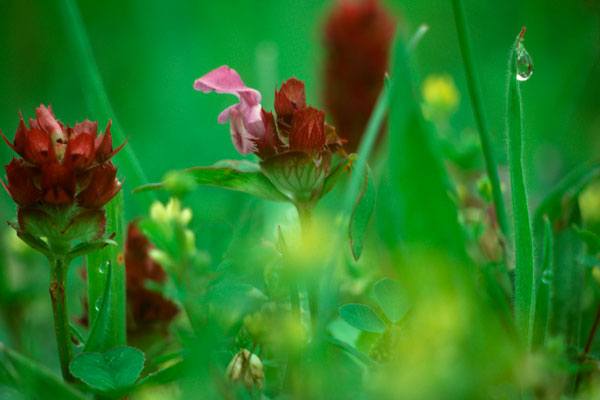Watching the grass grow isn’t unusual for photographer Jan Kepley.
For years, Kepley has been peering over green patches and scenic views hours at a time looking for metaphors through shots that capture him.
“It’s about filming the specialness of the most common,” he said.
Since starting his Natural Light Photography business, Kepley has opted not to use flash photography while in the field.
“When I started I didn’t have the flash equipment,” he said. “But I don’t like the phony feeling of it.”
For his photos, he prefers to wait for the right photo at the right time.
“Patience in everything you do. If your mind’s in a hurry, you might miss it,” he said.
One example is his photo “Together,” showing pea tendrils intertwined.
That shot took him three years.
The first year, deer ate the peas. The second year the wind was blowing on the best day at the optimum time. Finally, his patience paid off the third year.
“Some of the magic is it’s not wham-bam-done. It’s getting it at the right time,” Kepley said.
The right tools
Kepley and his wife, Kay, moved to the Sequim area in 1980 from Northeastern Oregon where they were living on a ranch.
With a background in fine arts and the building trade, Kepley made the transition to full-time photography soon thereafter when the construction industry took a dip.
He started with a Nikon SLR. Today he primarily uses a digital Fuji SS built on a Nikon body, which he says gets a more photographic look than other cameras. The switch to digital wasn’t easy, he said, after opting to sell some of his original film cameras.
But he found once he sent film in for development it cost thousands of dollars a year. Now he prints with professional equipment from home.
Recalling a quote loosely from Louis Armstrong, Kepley, also a trained classical musician, said it’s not the quality of the instruments but the quality of the people playing the instruments.
“It’s not about the equipment and I’m a guy who has worked with the best cameras,” he said.
If he gives credit to any of his equipment, it’s his tripods.
“Tripod is everything. It slows you down. But a lot of this wouldn’t have happened without it,” he said gesturing to photos on his wall.
For all photographers, he recommends starting at a camera store and seeing if they’ll let you try your camera on different tripods. Another place to look is online and in secondhand stores.
Capturing the right shot is key, but getting there is important, too. Kepley has gone to great lengths, or heights, to build his own tripods, including a 10-foot wooden tripod built specifically for one shot.
While shooting up close, he’ll lie level, called belly photography, with a flat tripod on the ground using a telephoto macro lens to remain comfortable.
Peace of mind
On a shoot, Kepley typically goes out without a subject in mind.
“You just go out with exploration in mind,” he said.
He finds people reveal themselves through their intentions. His intention is to find what people see but on an intimate level.
“A cell phone (camera) can get the obvious things, but that’s not what I’m most interested in,” he said.
“I prefer the metaphors. I photograph them to say something else but not every photo is that.”
Kepley said he can spend a lot of time under a hood sliding around on the grass looking at individual blades of grass.
He finds it’s better for photographers to take something that’s meaningful from their photos rather than taking hundreds of photos with less consequence.
“Anything of quality takes time,” he said. “It’s about exploring your own possibilities and mental process.”
If the season and conditions are right, Kepley said he’ll wake up around 4 a.m. to snap pictures.
He shoots mostly in the morning but not exclusively. “We have such wonderful cloudy days it doesn’t matter so much when,” he said.
Morning light is best, Kepley finds, because nature is fresher and there’s more moisture in the air.
One recurring problem is wind. To stymie it, he created a system of wind breaks with a folded mat board that wraps around his shooting area.
While photographers can find great spots in their backyard with rigs like Kepley’s, he often returns to favorite spots, too, at the coast, Cat Lake and Gardiner Beach.
Kepley’s work has been on display throughout Sequim in several venues and is currently up in Designs by Thomas.
He continues to shoot once or twice a week for greeting cards and prints and sometimes does portraits and weddings. In the past, he’s taught college photography courses and led workshops.
For more information on his full line of photos for cards and prints, contact Kepley directly at 797-7283 or through natural-light-photography.com.



